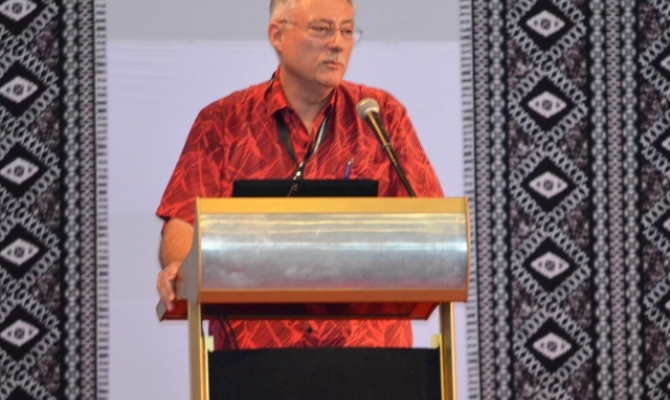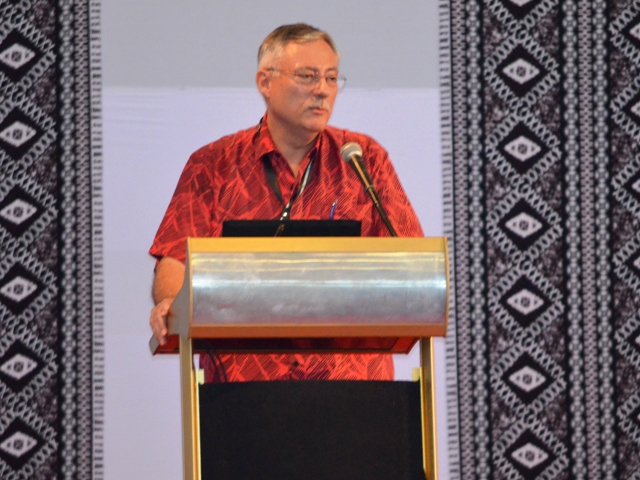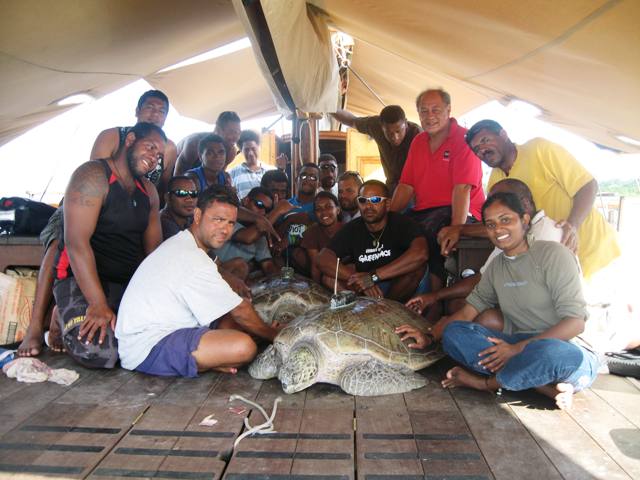
Island and Ocean Ecosystems
3 December 2013, Suva Fiji - By Steve Pogonowski:- Pacific Island countries and territories face internal and external threats to their biodiversity, according to two draft reports discussed at the 9th Pacific Islands Conference on Nature Conservation and Protected Areas this afternoon.
The State of Conservation in Oceania report and the Action Strategy for Nature Conservation in the Pacific islands, to be released in 2014.

Stuart Chape, Director of Biodiversity and Ecosystem Management for the Secretariat for the Pacific Regional Environment Programme (SPREP), said the State of Conservation report showed a grim picture of endangered and threatened species levels in the Oceania region.
One example was the health of shark numbers: of 75 species in the Oceania region, the report identified 27 per cent as under threat.
Turtle conservation is also facing challenges across the region, as harvesting is the key reason for their declining numbers.
Fiji was also shown to contain the highest number of invasive species in the region.
 Image courtesy of Lui Bell files, Ringgold Island, Fiji, Turtle Survey 2010
Image courtesy of Lui Bell files, Ringgold Island, Fiji, Turtle Survey 2010
"There are many challenges over the next six years. Island countries need to be provided with the level of resources needed to deal with manageable threats," Mr. Chape said.
"Monitoring and assessment of (these threats) needs to be taken seriously to deal with climate change."
David Sheppard, SPREP Director General, spoke on the upcoming Action Strategy for Nature Conservation in the Pacific islands 2014-2020 and the review of the previous Action Strategy.
He supported the comments made by President of the Republic of Fiji, His Excellency Ratu Epeli Nailatikau, that putting people and communities at the centre of conversation programs is vital and furthermore helps to support the ecotourism industry.
"The people have the experience and the knowledge from living sustainably with the environment," Mr. Sheppard said.
"Without a clean healthy, well-managed environment, there isn't a viable tourism sector."
He used the example of actions taken after a climate change vulnerability assessment in Choiseul Province, Solomon Islands as a blueprint for "working together to use ecosystem-based adaptation as a response to issues resulting from climate change."
The State of Conservation in Oceania report and the Action Strategy for Nature Conservation in the Pacific islands, to be released in 2014.

Stuart Chape
Stuart Chape, Director of Biodiversity and Ecosystem Management for the Secretariat for the Pacific Regional Environment Programme (SPREP), said the State of Conservation report showed a grim picture of endangered and threatened species levels in the Oceania region.
One example was the health of shark numbers: of 75 species in the Oceania region, the report identified 27 per cent as under threat.
Turtle conservation is also facing challenges across the region, as harvesting is the key reason for their declining numbers.
Fiji was also shown to contain the highest number of invasive species in the region.
 Image courtesy of Lui Bell files, Ringgold Island, Fiji, Turtle Survey 2010
Image courtesy of Lui Bell files, Ringgold Island, Fiji, Turtle Survey 2010"Monitoring and assessment of (these threats) needs to be taken seriously to deal with climate change."
David Sheppard, SPREP Director General, spoke on the upcoming Action Strategy for Nature Conservation in the Pacific islands 2014-2020 and the review of the previous Action Strategy.
He supported the comments made by President of the Republic of Fiji, His Excellency Ratu Epeli Nailatikau, that putting people and communities at the centre of conversation programs is vital and furthermore helps to support the ecotourism industry.
"The people have the experience and the knowledge from living sustainably with the environment," Mr. Sheppard said.
"Without a clean healthy, well-managed environment, there isn't a viable tourism sector."
He used the example of actions taken after a climate change vulnerability assessment in Choiseul Province, Solomon Islands as a blueprint for "working together to use ecosystem-based adaptation as a response to issues resulting from climate change."